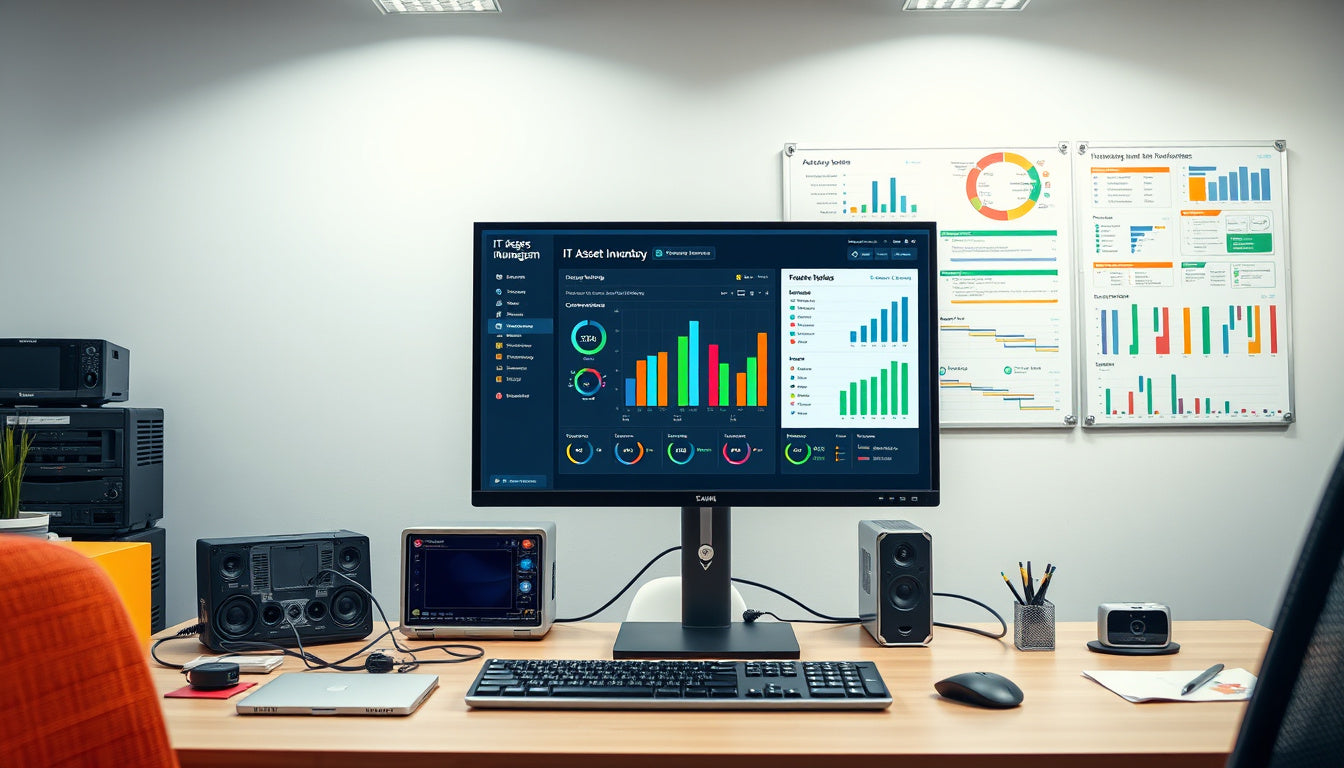In today's rapidly evolving technological landscape, effective inventory management of IT assets is critical for organizations seeking to optimize their operations, mitigate risks, and enhance security. IT asset management (ITAM) not only involves keeping track of physical devices like computers and servers but also extends to software and virtual assets, ensuring that all components of the IT environment are accounted for and managed efficiently.

Understanding IT Asset Management
IT asset management is the comprehensive discipline of tracking and managing an organization’s IT assets throughout their lifecycle. This encompasses a wide range of assets, including hardware, software, virtual machines, and even unmonitored devices such as IoT gadgets. The aim is to cultivate a complete inventory that enables an organization to monitor usage, assess costs, manage compliance, and improve overall resource allocation.
The Importance of a Comprehensive Asset Inventory
Effective inventory management provides several benefits:
-
Visibility and Control: An up-to-date inventory allows organizations to have a clear view of all assets, aiding in risk management and operational efficiency. This visibility helps in identifying security vulnerabilities before they can be exploited by malicious actors.
-
Cost Efficiency: By understanding the complete landscape of assets, organizations can better manage budgets and optimize resource allocation, ensuring that money is not wasted on unnecessary or redundant assets.
-
Regulatory Compliance: Many industries face strict regulations regarding data privacy and usage. Maintaining a meticulous asset inventory is essential to ensure compliance with these regulations, ultimately protecting the organization from potential fines and legal issues.
-
Enhanced Security Posture: A precise inventory allows IT and cybersecurity teams to prioritize remediation efforts based on the criticality of assets. This enables organizations to defend their IT environments more effectively against evolving cybersecurity threats.
Key Strategies for Effective IT Asset Inventory Management
To maximize the efficiency of IT asset management, several strategies can be employed:
1. Automated Asset Discovery
Manual tracking processes are often inefficient and prone to error. Adopting automated tools that continuously discover and inventory assets can help organizations maintain an accurate and up-to-date catalog in real-time. These tools can automatically identify devices, applications, and software, ensuring that no assets are overlooked.
2. Continuous Monitoring and Real-Time Updates
Static inventories quickly become outdated due to the dynamic nature of IT environments. Implementing a system that offers continuous monitoring ensures that all changes—such as the addition of new devices or disconnections of old ones—are promptly updated. This practice helps organizations keep pace with new vulnerabilities and threats.
3. Integration with Security Solutions
Integrating the asset inventory system with existing security tools, such as vulnerability management platforms and endpoint protection solutions, can provide a unified approach to managing risks. This integration facilitates automated alerts for any unauthorized changes or discovered vulnerabilities, allowing security teams to respond swiftly.
4. Regular Audits and Compliance Checks
Conducting routine audits not only validates the accuracy of the asset inventory but also helps in discovering overlooked assets. These audits are essential in ensuring regulatory compliance and understanding the total cost of ownership of each asset.
Implementing an IT Asset Management Program
To establish a robust IT asset management program, organizations should:
-
Define Asset Types: Clearly categorize the different types of assets that need to be tracked. This includes hardware, software licenses, IoT devices, and more.
-
Select the Right Tools: Choose asset management software that supports automation and integrates well with other tools your team uses. Key features to look for include real-time tracking, comprehensive reporting, and scalability.
-
Assign Risk Profiles: For each asset, determine its risk profile based on its importance to the organization and potential security vulnerabilities. This will help prioritize management efforts.
-
Ensure Continuous Education and Training: Keep IT staff updated about the latest asset management practices, tools, and potential risks. Continuous training can improve the effectiveness of the management program and foster a security-conscious culture.
Conclusion
Mastering inventory management of IT assets is crucial for organizations aiming to enhance operational efficiency and strengthen their security posture. By adopting automated solutions, ensuring real-time visibility, and fostering a culture of continuous improvement and compliance, organizations can effectively manage their IT assets, reduce costs, and mitigate potential risks. As technology continues to evolve, investing time and resources into robust asset management practices is more important than ever for sustainable business growth.
Get started with your free Managed IT Services assessment today! Contact us at info@logicstechnology.com or by phone at (888) 769-1970.

